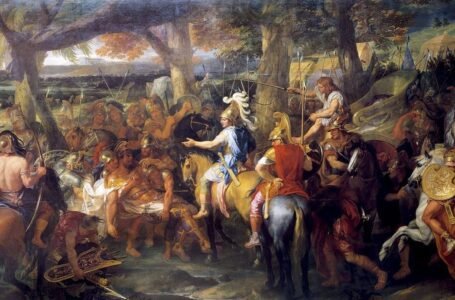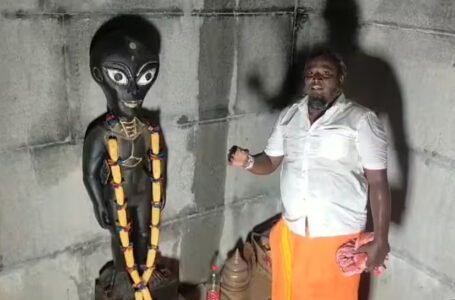Sethu Lakshmi Bai – The Revolutionist Queen of Travancore
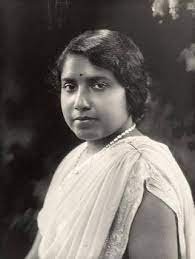
Pooradam Thirunal Sethu Lakshmi Bai, the queen of Travancore was a lady who revolutionized female education in her region, the one who inspired and led.
“For her people, she lived, selflessly and loyal
Such was the reign of this queen, elegant and royal.”
Sethu Lakshmi Bai was born on 19 November 1895 to Ayilyam Nal Mahaprabhu of the Utsavamadhom Palace in Mavelikara and Kerala Varma.She was the granddaughter of artist Raja Ravi Verma. Senior Maharani Lakshmi Bai and Junior Maharani Parvathi Bai had been adopted and were assigned as the Maharanis of Travancore in 1858. This adoption, which was the 6th in the Travancore House, proved no good as the Senior Rani Lakshmi Bai, who was married to Kerala Varma Valiya Koil Thampuran was childless while the Junior Maharani Parvathi Bai had only sons. In the on-going matrilineal system of inheritance known as Marumakkathayam, the presence of females to continue the line and dynasty was necessary. With the death of the Junior Maharani Parvathy Bai in 1893, followed by that of the eldest of her three sons in 1895, the royal family came to consist solely of Maharajah Moolam Thirunal, Rani Lakshmi Bai and her two nephews. The Senior Maharani decided to adopt the daughters of her nieces, Mahaprabha and Kochukunji of Mavelikara, into the Travancore Royal Family. Eventually, a daughter was born to Mahaprabha in 1895, the child was named Sethu Lakshmi. The next year in 1896, Kochukunji gave birth to a daughter who was named Sethu Parvathi.

At the age of 6, Sethu Lakshmi Bai succeeded Maharani Lakshmi Bai as the senior Maharani of Attingal. Sethu Parvati Bai was given the title of junior Maharani. Kerala Varma Valiya Koil Thampuran, consort of the late Senior Maharani Lakshmi Bai, was appointed the guardian of the two minor queens and tutors were appointed to teach them. In 1906, when she was ten years old, Sethu Lakshmi Bai was married to Sri Rama Varma, a grandnephew of her guardian who belonged to the royal house of Haripad.
In 1924, Sethu Lakshmi Bai received news that King MoolamThirunal was in a critical health stage due to sepsis. The Maharaja died leaving behind the 12-year-old Sree Chithira Thirunal Balarama Varma as heir to the throne. But since he was a minor, it was decided that Seth Lakshmi Bai would be his regent until he came to the age of majority. This was opposed by his mother Sethu Parvathi Bai. Lakshmi Bai had to face bitterness from her side. Since the Travancore family followed matrilineal ways, Lakshmi Bai had control of the overall administration and exercised full power even in the absence of a male heir to the throne.
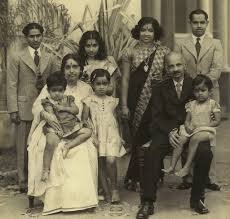
Maharani Sethu Lakshmi Bai was a feminist who gave high importance to women’s education and provided women the opportunity to step up to high posts. She announced unusual but attractive rewards like a tea party for all the girls who went to college in the royal palace in her presence. Such offers attracted a lot of women. Months after her succession she appointed Dr.Mary Poonen Lukose, Travancore’s first woman graduate from being surgeon in charge of Women and Children’s hospital and her personal doctor to being the head of medical department of Travancore. She (Sethu Lakshmi Bai) is also credited with raising the standards of the woman’s college of Trivandrum from second grade to an institute that got affiliated with the University of Madras.

In 1925, Mahatma Gandhi visited her majesty during the Vaikom Satyagraha, he says in his magazine Young India, “My visit to Her Highness was an agreeable surprise for me. Instead of being ushered into the presence of an over decorated woman sporting diamond pendants and necklaces, I found myself in the presence of a modest young woman who relied not upon jewels or gaudy dresses for beauty but on her own naturally well-formed features and exactness of manners. Her room was as plainly furnished as she was dressed. Her severe simplicity became an object of my envy. She seemed to me an object lesson for many a prince and many a millionaire whose loud ornamentation, ugly looking diamonds, rings and studs and still more loud and almost vulgar furniture offend the taste and present a terrible and sad contrast between them and the masses from whom they derive their wealth.” But her act of not allowing Dalit entry to the temples citing she is only a “regent” when Gandhiji asked her to had sparked high criticism.
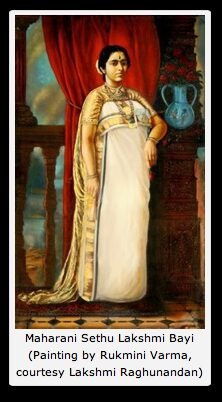
She brought about several social reforms during her reign. Animal sacrifice was banned in Travancore.Sethu Lakshmi Bai abolished the devadasi system.
Amendments were brought about in the same year in the Travancore Nayar Act with respect to the Marumakkathayam system of inheritance and family, and eventually, in 1928 the system was abolished introducing patrilineal nuclear family system in Travancore. A law was passed in 1925 to develop local self-government in rural areas in the form of Panchayats. In 1926 she passed a Newspaper Regulation Act which restricted many rights of the press. The Medical Department was modernised to provide better services. She also appointed the first female doctor in Travancore as Durbar Physician and head of the Medical Department. In 1928 a Central Road Board was established and several new highways and roads were constructed across Travancore. The Quilon Ernakulam Railway was completed and Telephone services were made open for the public. By the end of the regency, the government was spending nearly 22% of the state’s revenue on the Education Department. By mid-1931 it was decided that the accession of Sree Chithira Thirunal should take place after his 19th birthday. Accordingly in November 1931, after 7 years, the regency of Sethu Lakshmi Bai came to an end and the Heir Apparent Chithira Thirunal Balarama Varma became the King of Travancore. It is estimated that during her regency, the revenues of Travancore had risen to more than Rs. 250,00,000/-.

Sethu Lakshmi Bai then moved to Bangalore. When the Privy Purse was banned by the Indian Government, she stopped receiving her pension, but later after a legal battle, her regency was re-established. She then fell severely ill and breathed her last in February 1985.
The Malayala Manorama describes her as “The reign of Setu Lakshmi Bai was the Golden Age of Travancore. At the time these words echoed through the land: “When the Rani of Vanchi rules, there is everlasting Thiru Onam in Vanchinadu”. She was royal, humble, powerful, and a visionary. This was the story of Sethu Lakshmi Bai- the Rani of Vanchi.

